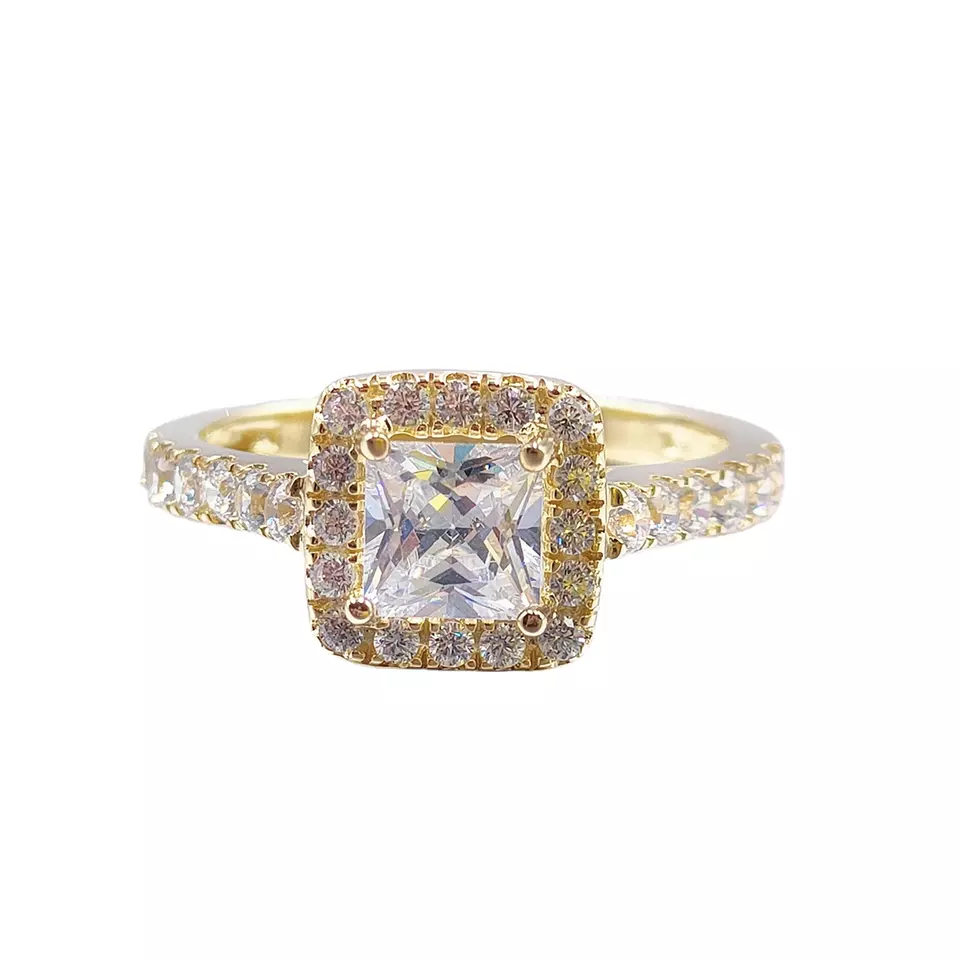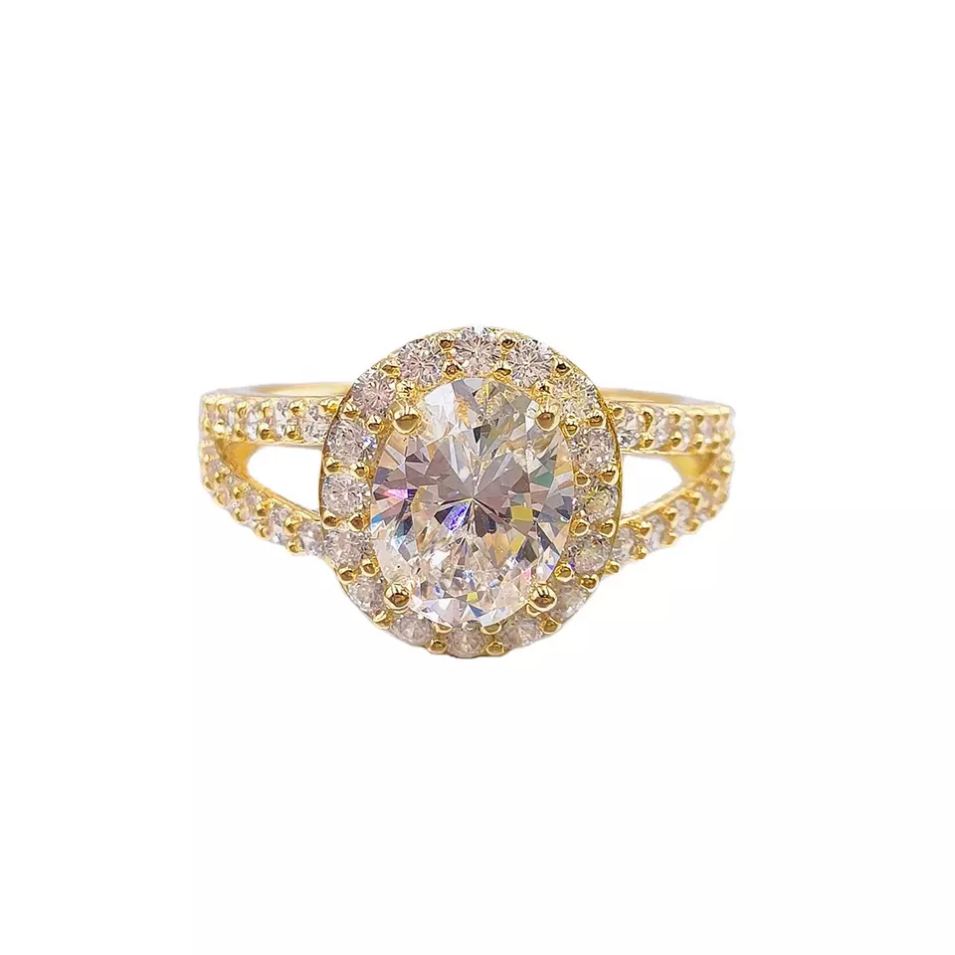While it may seem like a minor detail, the number of prongs that an engagement ring will set is an important decision. While the number of prongs per ring can vary from 3 to more than 8 prongs, most solitaire rings have 4 or 6.
What's the difference between 4-prong ring and 6-prong ring? If one of them is better, why would jewelers sell those two types of rings? Why not just sell one type of them?
Actually, both 4-prong and 6-prong have their own advantages and disadvantages. In this article, we will delve into the similarities and differences between the two types of settings, and finally, it will be up to you to decide which one is better for you.
What is the prong in an engagement ring?
A prong is a slender protrusion or metal tip used to hold the gem in the ring setting. Prongs come in different styles and shapes, but the main function of these metal tips is to provide maximum safety and beauty to the gem. The more prongs, the safer the stone. Alternatively, using less set prongs reduces security, but it also allows more of the gemstone surface to be visible.
One of the main misconceptions about 4-prong and 6-prong ring brackets is that the 4-prong setting will make the diamond look brighter. This is not the case, because the sparkle of a diamond comes from the quality of the cut, not from reducing the number of prongs that hold it in place. The two extra prongs are too small to affect the brightness of the prong setting.

4 Claws
A ring with four-prong setting is covered with less metal, which ensures that more light passes through the diamond. This means getting the most out of a well-cut diamond and making it more visible. While fewer prongs do not necessarily affect the brightness of the diamond, it allows the diamond to take center stage with minimal metal obstruction.
The four-prong setting consists of four evenly spaced pointed prongs, which look like the corners of a square object, giving the diamond the shape of a square box. Obviously, this makes it an excellent choice for prong settings for square diamond shapes such as radiant cut, cushion cut, asscher cut and princess cut, as it provides perfect symmetry to these shapes. For round diamonds, the 4-prong set can give a round and princess square hybrid appearance.



Cleaning a 4-prong ring is easier than cleaning a 6-prong ring because it is easier to reach underneath the diamond and remove dirt and grime from hard-to-reach areas.
If the diamond is small, a 4-prong set won't dwarf it as much as a 6-prong set. For little gem's minimalist style, a 4-prong set is the way to go. In either case, a thinner prong enhances the size and beauty of a smaller stone.
On the other hand, 4 prongs are not as safe as 6 prongs. While it is safe enough to be an excellent choice for everyday wear. However, if a 4-prong ring loses one of its prongs, the diamond may fall off easily.
The 4-prong setting also does not provide as much protection as possible for the waistline of diamonds (the thin faceted edge that separates the top and bottom of the diamond). The 4 prongs setting is much more exposed and is easily scratched and worn.

6 Claws
To minimize the area of the diamond covered by the metal prong, each metal prong in a 6-prong setting is generally lighter and thinner. The 6-prong insert maintains the roundness of the diamond and provides a more continuous roundness for the eye. Six evenly spaced metal prongs are arranged around the circumference of a diamond, forming a hexagonal shape that makes the diamond appear rounder and larger from a distance.
The number of prongs also depends heavily on the shape of the diamond. For slender diamonds such as marquise cut or pear cut, 4-prong diamonds are not a practical option. In these cases, the 6 prong provides the best security and stability for the ring.

The 6-prong has a slight safety advantage over the 4-prong. If a 4-prong ring loses one of its prongs, the diamond may easily fall off, while if this happens to a 6-prong set, the diamond is likely to remain firmly in place.
6 prongs setting provide as much protection as possible for the diamond waistline. The 6-prong setting fits more tightly together, minimizing exposure to the waistline.
Generally, we suggest that people can use the design of 6 prongs setting when purchasing big diamond (if greater than 1 ct). Obviously, if you know in advance that the device in which the jewelry is placed and secured is rough, it is wise to sacrifice a little sparkle for greater security.

Which one should you choose?
The setting you choose depends on subjective preferences and the overall style of the ring. If you are not sure which option to choose, if your diamond is large (about 1 ct or more), it is recommended that you choose a 6-claw set as it provides additional security.
If you want to know whether the number of claws affects the price of the ring, no. The two extra claws in the 6-claw ring have almost no effect on the overall price.
When choosing 4 claws or 6 claws setting, the most important thing is workmanship quality. Platinum is the best choice because it is the hardest and most durable precious metal and does not wear out easily, while 18K and 14K gold are also pretty good choices. Make sure the claw is well made and that the gem is set up well inside the claw. Check your claws regularly (about once a year), in case anything goes wrong.
Post time: Sep-27-2022


